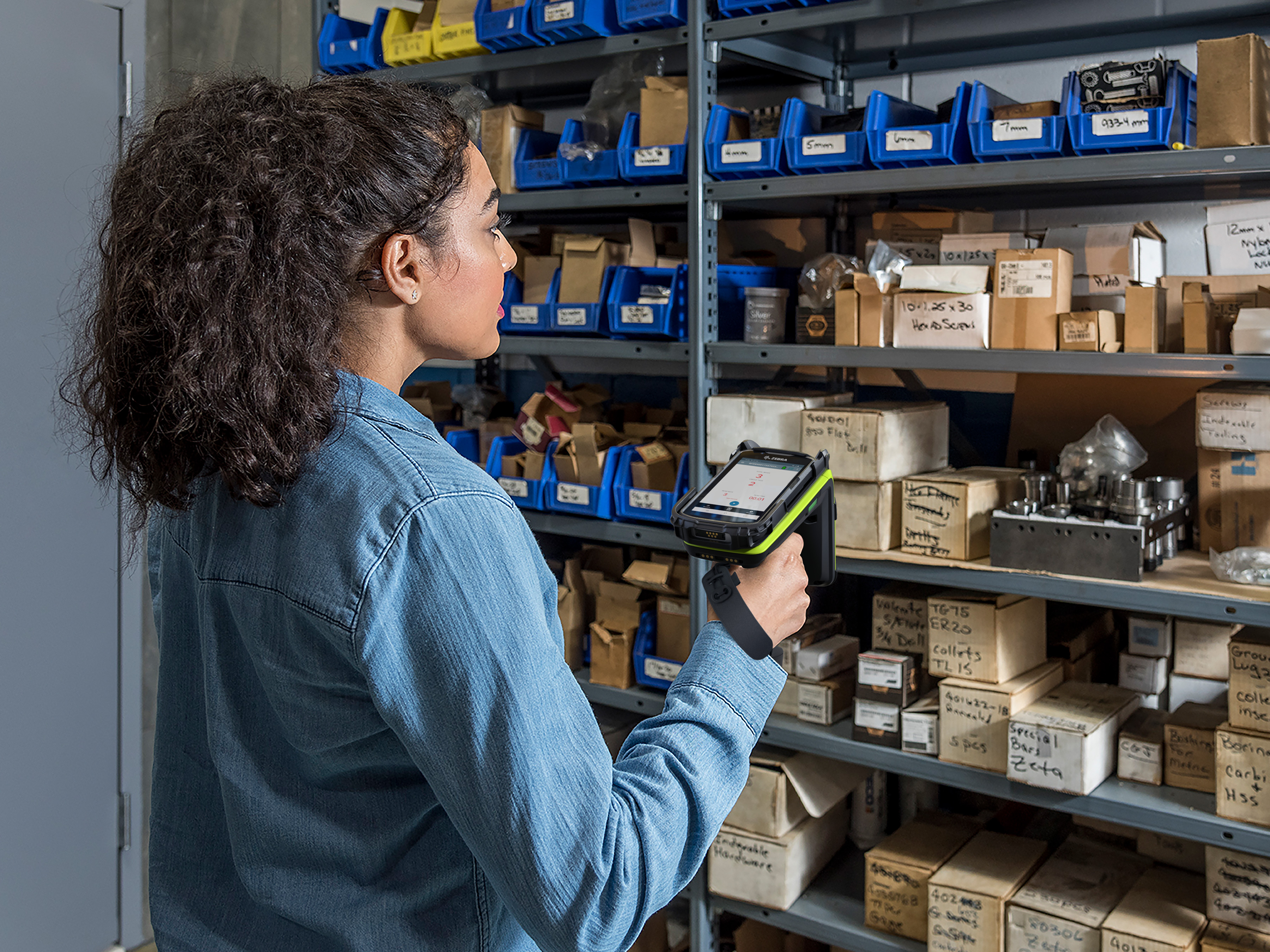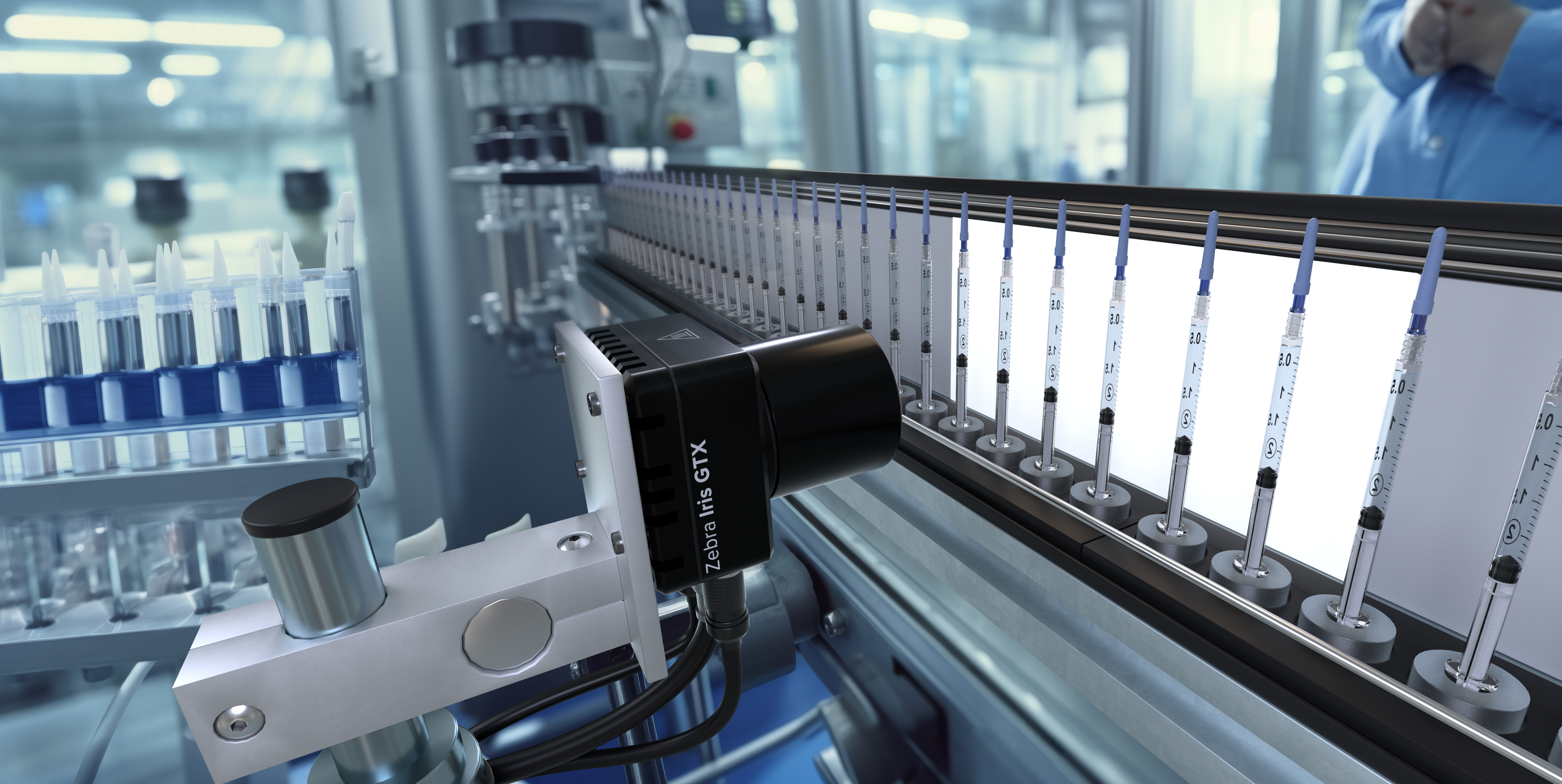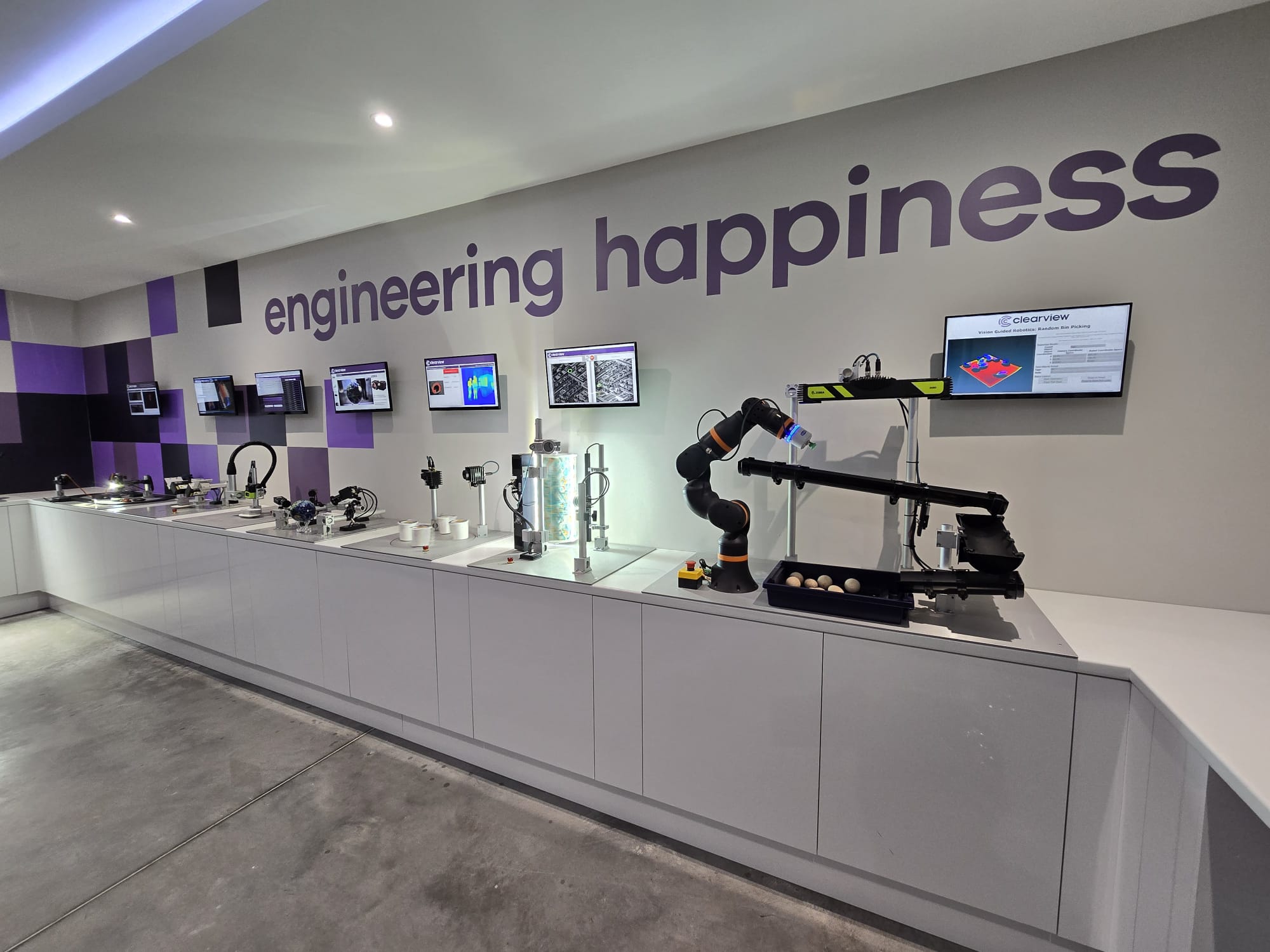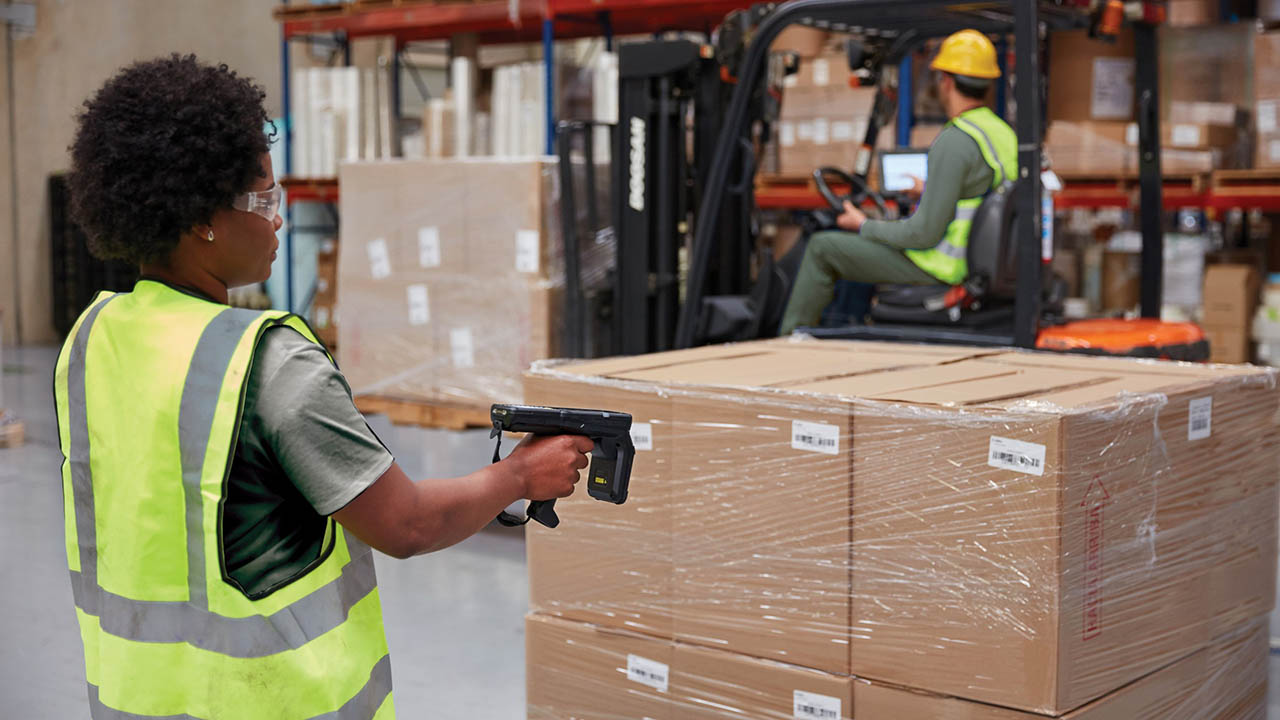Transform retail operations with Zebra’s retail technology solutions, featuring hardware and software for improving inventory management and empowering teams.
Streamline operations with Zebra’s healthcare technology solutions, featuring hardware and software to improve staff collaboration and optimize workflows.
Enhance processes with Zebra’s manufacturing technology solutions, featuring hardware and software for automation, data analysis, and factory connectivity.
Zebra’s transportation and logistics technology solutions feature hardware and software for enhancing route planning, visibility, and automating processes.
Learn how Zebra's public sector technology solutions empower state and local governments to improve efficiency with asset tracking and data capture devices.
Zebra's hospitality technology solutions equip your hotel and restaurant staff to deliver superior customer and guest service through inventory tracking and more.
Zebra's market-leading solutions and products improve customer satisfaction with a lower cost per interaction by keeping service representatives connected with colleagues, customers, management and the tools they use to satisfy customers across the supply chain.
Empower your field workers with purpose-driven mobile technology solutions to help them capture and share critical data in any environment.
Zebra's range of Banking technology solutions enables banks to minimize costs and to increase revenue throughout their branch network. Learn more.
Zebra's range of mobile computers equip your workforce with the devices they need from handhelds and tablets to wearables and vehicle-mounted computers.
Zebra's desktop, mobile, industrial, and portable printers for barcode labels, receipts, RFID tags and cards give you smarter ways to track and manage assets.
Zebra's 1D and 2D corded and cordless barcode scanners anticipate any scanning challenge in a variety of environments, whether retail, healthcare, T&L or manufacturing.
Zebra's extensive range of RAIN RFID readers, antennas, and printers give you consistent and accurate tracking.
Choose Zebra's reliable barcode, RFID and card supplies carefully selected to ensure high performance, print quality, durability and readability.
Zebra's location technologies provide real-time tracking for your organization to better manage and optimize your critical assets and create more efficient workflows.
Zebra's rugged tablets and 2-in-1 laptops are thin and lightweight, yet rugged to work wherever you do on familiar and easy-to-use Windows or Android OS.
With Zebra's family of fixed industrial scanners and machine vision technologies, you can tailor your solutions to your environment and applications.
Zebra’s line of kiosks can meet any self-service or digital signage need, from checking prices and stock on an in-aisle store kiosk to fully-featured kiosks that can be deployed on the wall, counter, desktop or floor in a retail store, hotel, airport check-in gate, physician’s office, local government office and more.
Adapt to market shifts, enhance worker productivity and secure long-term growth with AMRs. Deploy, redeploy and optimize autonomous mobile robots with ease.
Discover Zebra’s range of accessories from chargers, communication cables to cases to help you customize your mobile device for optimal efficiency.
Zebra's environmental sensors monitor temperature-sensitive products, offering data insights on environmental conditions across industry applications.
Enhance frontline operations with Zebra’s AI software solutions, which optimize workflows, streamline processes, and simplify tasks for improved business outcomes.
Zebra Workcloud, enterprise software solutions boost efficiency, cut costs, improve inventory management, simplify communication and optimize resources.
Keep labor costs low, your talent happy and your organization compliant. Create an agile operation that can navigate unexpected schedule changes and customer demand to drive sales, satisfy customers and improve your bottom line.
Drive successful enterprise collaboration with prioritized task notifications and improved communication capabilities for easier team collaboration.
Get full visibility of your inventory and automatically pinpoint leaks across all channels.
Reduce uncertainty when you anticipate market volatility. Predict, plan and stay agile to align inventory with shifting demand.
Drive down costs while driving up employee, security, and network performance with software designed to enhance Zebra's wireless infrastructure and mobile solutions.
Explore Zebra’s printer software to integrate, manage and monitor printers easily, maximizing IT resources and minimizing down time.
Make the most of every stage of your scanning journey from deployment to optimization. Zebra's barcode scanner software lets you keep devices current and adapt them to your business needs for a stronger ROI across the full lifecycle.
RFID development, demonstration and production software and utilities help you build and manage your RFID deployments more efficiently.
RFID development, demonstration and production software and utilities help you build and manage your RFID deployments more efficiently.
Zebra DNA is the industry’s broadest suite of enterprise software that delivers an ideal experience for all during the entire lifetime of every Zebra device.
Advance your digital transformation and execute your strategic plans with the help of the right location and tracking technology.
Boost warehouse and manufacturing operations with Symmetry, an AMR software for fleet management of Autonomous Mobile Robots and streamlined automation workflows.
The Zebra Aurora suite of machine vision software enables users to solve their track-and-trace, vision inspection and industrial automation needs.
Zebra Aurora Focus brings a new level of simplicity to controlling enterprise-wide manufacturing and logistics automation solutions. With this powerful interface, it’s easy to set up, deploy and run Zebra’s Fixed Industrial Scanners and Machine Vision Smart Cameras, eliminating the need for different tools and reducing training and deployment time.
Aurora Imaging Library™, formerly Matrox Imaging Library, machine-vision software development kit (SDK) has a deep collection of tools for image capture, processing, analysis, annotation, display, and archiving. Code-level customization starts here.
Aurora Design Assistant™, formerly Matrox Design Assistant, integrated development environment (IDE) is a flowchart-based platform for building machine vision applications, with templates to speed up development and bring solutions online quicker.
Designed for experienced programmers proficient in vision applications, Aurora Vision Library provides the same sophisticated functionality as our Aurora Vision Studio software but presented in programming language.
Aurora Vision Studio, an image processing software for machine & computer vision engineers, allows quick creation, integration & monitoring of powerful OEM vision applications.
Adding innovative tech is critical to your success, but it can be complex and disruptive. Professional Services help you accelerate adoption, and maximize productivity without affecting your workflows, business processes and finances.
Zebra's Managed Service delivers worry-free device management to ensure ultimate uptime for your Zebra Mobile Computers and Printers via dedicated experts.
Find ways you can contact Zebra Technologies’ Support, including Email and Chat, ask a technical question or initiate a Repair Request.
Zebra's Circular Economy Program helps you manage today’s challenges and plan for tomorrow with smart solutions that are good for your budget and the environment.
The Zebra Knowledge Center provides learning expertise that can be tailored to meet the specific needs of your environment.
Zebra has a wide variety of courses to train you and your staff, ranging from scheduled sessions to remote offerings as well as custom tailored to your specific needs.
Build your reputation with Zebra's certification offerings. Zebra offers a variety of options that can help you progress your career path forward.
Build your reputation with Zebra's certification offerings. Zebra offers a variety of options that can help you progress your career path forward.

Think It’s Time to Cut the (Scanner) Cord?
In a recent blog post, a few AIDC experts debated whether it makes more sense for retailers, restaurant operators, healthcare providers and others to install hands-free barcode scanners in their facilities or give workers and customers handheld scanners. Yet, we realize many of you are also weighing the pros and cons of corded versus cordless scanners as you plan your next technology upgrade.
You might be asking, “What’s the difference between handheld/hands-free and corded/cordless?”
Well, the choice between a handheld or hands-free scanner is based on whether you can bring barcoded items to the scanner or need to bring the scanner to the items being scanned. And the decision to go with a corded or cordless scanner has to do with your connectivity needs. Do you want the scanner to be tethered with a cord so it is restricted to a particular station? Or do you need a truly mobile scanner, in which a cordless scanner with Bluetooth® capability is best?
We have reconnected with Amanda Barkan and Brian Walters, and asked Ron Ethe to join the conversation, so we can further breakdown the benefits of cordless versus corded barcode scanners:
Your Edge Blog Team: In the past, corded scanners dominated the scanner market. Is that still the case? Or do you see a shift toward cordless scanners now that industries are under more pressure to increase the speed and efficiency of tasks?
Ron: Cordless scanners are certainly becoming popular. For example, in-aisle and backroom inventory scans are being conducted at a higher frequency than ever, and regular price checks and updates rely on both item and shelf label scans. Though some store associates may have rugged mobile computers with built-in barcode scanners in hand to complete these types of tasks, associates dedicated solely to inventory counts may only need a cordless handheld barcode scanner to be most efficient and successful at their jobs. But I wouldn’t say we’re going to see everyone “cut the cord,” so to speak. There are still many instances where cordless scanners aren’t needed. For instance, occasional scanning of small items likely wouldn’t require Bluetooth flexibility.
Your Edge Blog Team: What about in healthcare? Wouldn’t cordless scanners almost always be the preference considering how barcode scanners are used at the bedside and beyond? Or do you find there are still valid use cases for corded scanners?
Brian: Generally speaking, cordless scanners are now more prevalent in healthcare environments than corded scanners, especially at the bedside. With infection prevention at an all-time high, many hospitals see cordless scanners as a way to minimize cross-contamination, as clinicians don’t have to worry about cleaning a cord that may come into contact with multiple surfaces or accidentally touch a patient when being used. Of course, all of our healthcare scanners can be disinfected to medical grade standards, and there is both a blog post and website that explain what to use and how to clean the scanners thoroughly. But there is a strong case for cordless scanners in many healthcare settings given this strong focus on infection prevention.
That said, there are still some cases in which corded scanners might be a viable, and even preferable, option. For example, corded scanners are still commonly used at patient admission stations and in labs. Some scanners used at patients’ bedsides are still corded, too. The form factor really depends on the preference of clinicians and decision makers, as well as budget.
Your Edge Blog Team: What would you say to those who are worried about cordless scanners walking away?
Amanda: We have a feature called Virtual Tether which helps prevent cordless devices from being misplaced. The scanner will sound an alarm, blink and vibrate when it gets too far from its base. There’s a great overview of how it works and its benefits in this blog post from our colleague Greg Carras.
Your Edge Blog Team: Are there any other differences in functionality besides the maneuverability aspect?
Brian: There is a difference in how edge data is sent back to information systems. A corded scanner is connected by a cable somehow, often via USB, RS-232, TGCS (IBM) 46XX over RS-485 port or even a Keyboard Wedge. So, it’s a wired data transmission. But cordless devices can send data via Bluetooth directly to the host system, or to a cradle which is still cabled to the host system. The latter is more popular. Either way, the good news is that organizations have the flexibility to push this data in real time or batch the data depending on their needs.
Ron: I know some customers also ask about the power capacity of cordless scanners since they aren’t always plugged in and recharging. However, there is a wide range of options available, including supercapacitors and batteries. Even better, the Zebra DS8100 Series offers swappable power sources so you don’t have to choose. Additionally, if anyone has "cordless concerns" related to battery management, we have smart batteries that tell you about battery health so you can take preemptive measures to recharge or replace batteries before performance starts to lag.
Your Edge Blog Team: During our last discussion, we concluded that most organizations don’t have to choose between handheld or hands-free scanners anymore thanks to new hybrid and convertible scanners that can transform between form factors. So, does that mean they don’t have to choose between corded and cordless scanners anymore, either?
Brian: Technically, yes. The Zebra CS60 Series Scanner can convert from corded to cordless – and handheld to hands-free modes – within seconds, making it extremely versatile. Convertible barcode scanners can accommodate and adapt to many different workflows.
Your Edge Blog Team: Are these adaptable scanners the right option for everyone, though? Are they the “one-size-fits-all” solution for businesses that need scanners to verify people’s identities, tickets and memberships or process loyalty points and payments?
Amanda: They are ideal for situations where you may not know what you will need next and desire that flexibility. But there are still very valid use cases for more traditional handheld barcode scanners, too. There isn’t a one-size-fits-all approach to barcode scanning.
Your Edge Blog Team: It sounds like those who decide it’s time to cut the cord can do so confidently knowing they won’t lose any functionality. And those who aren’t quite ready to cut the cord have the option to install corded or hybrid scanners.
Brian: That’s right. Zebra has a broad portfolio of options to meet every customer’s scanning needs. We’ve mentioned a few here and in our last blog discussion, but there are many more.
Your Edge Blog Team: What advice do you have for those who are ready to cut the (scanner) cord? What should they look for in a cordless scanner?
Amanda: They should look for cordless devices with advanced features such as smart batteries to manage battery health, power gauges that show charge status at-a-glance and on demand, as well as swappable power sources that can adjust with changing needs. It’s also important to confirm that a variety of charging cradles and accessories are available, including cradles that can be mounted to a wall, desk or countertop and those that can be used to enable presentation scanning.
Your Edge Blog Team: In other words, prioritize “power.”
Ron: Exactly. Devices must be able to power through long shifts without needing to recharge, and no one can afford for their device to die suddenly because the battery was draining unnoticed.
Brian: Along those same lines, it’s also important to choose devices with a Virtual Tether feature so they don’t accidentally walk off the premises or get misplaced. Scanner availability and uptime are critical to the front-line workers for whom these devices are intended. And be sure you choose a scanner with AutoConfig, as it will make it so much easier for your operations managers and IT teams to adapt the devices to different workflows as business demands change.
Amanda: It’s also important that you understand the device management requirements for each scanner and the tools available to ease that burden on IT, operations managers and even end users. Scanners, like other devices, need to be routinely configured, secured and updated, and their performance and health must be monitored. If you are using Zebra scanners, you can feel good that you’ll have what you need to capably manage the devices with minimal in-house resources. The DataCapture DNA tools we’ve developed are specifically designed to ease device (or fleet) deployment, management and more. We have a lot of information on our website about these capabilities because, from our perspective, they are just as critical to our customers’ return on investment as the scanner’s usability, flexibility and longevity.
###
Related Insights:
- Ever Wonder Why Zebra Mobile Computers, Scanners or Printers are Just Easier to Deploy, Manage and Use Than Others? Or Why They Last Longer?
- Good News, Retailers: You No Longer Have to Buy New Scanners Every Time Your Workflows Change. The New Zebra CS60 Series Convertible Scanner Can Take on Any Form and Task You Need It To!
- Sound the Alarms: You Won’t Have to Waste Time or Money on Missing Barcode Scanners Anymore
- Healthcare Processes, Patient Needs and Reporting Requirements are Changing Faster Than Ever. That’s Why Clinicians Need More Adaptable (and Patient-Friendly) Technology.
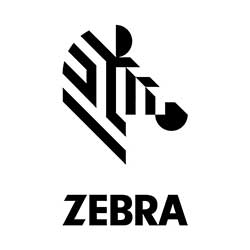
Zebra’s “Your Edge” Blog Team
The “Your Edge” Blog Team is comprised of content curators and editors from Zebra’s Global PR, Thought Leadership and Advocacy team. Our goal is to connect you with the industry experts best-versed on the issues, trends and solutions that impact your business. We will collectively deliver critical news analysis, exclusive insights on the state of your industry, and guidance on how your organization can leverage a number of different proven technology platforms and strategies to capture your edge.
Zebra Developer Blog
Zebra Developer BlogZebra Developer Blog
Are you a Zebra Developer? Find more technical discussions on our Developer Portal blog.
Zebra Story Hub
Zebra Story HubZebra Story Hub
Looking for more expert insights? Visit the Zebra Story Hub for more interviews, news, and industry trend analysis.
Search the Blog
Search the BlogSearch the Blog
Use the below link to search all of our blog posts.
Most Recent
Legal Terms of Use Privacy Policy Supply Chain Transparency
ZEBRA and the stylized Zebra head are trademarks of Zebra Technologies Corp., registered in many jurisdictions worldwide. All other trademarks are the property of their respective owners. ©2025 Zebra Technologies Corp. and/or its affiliates.

